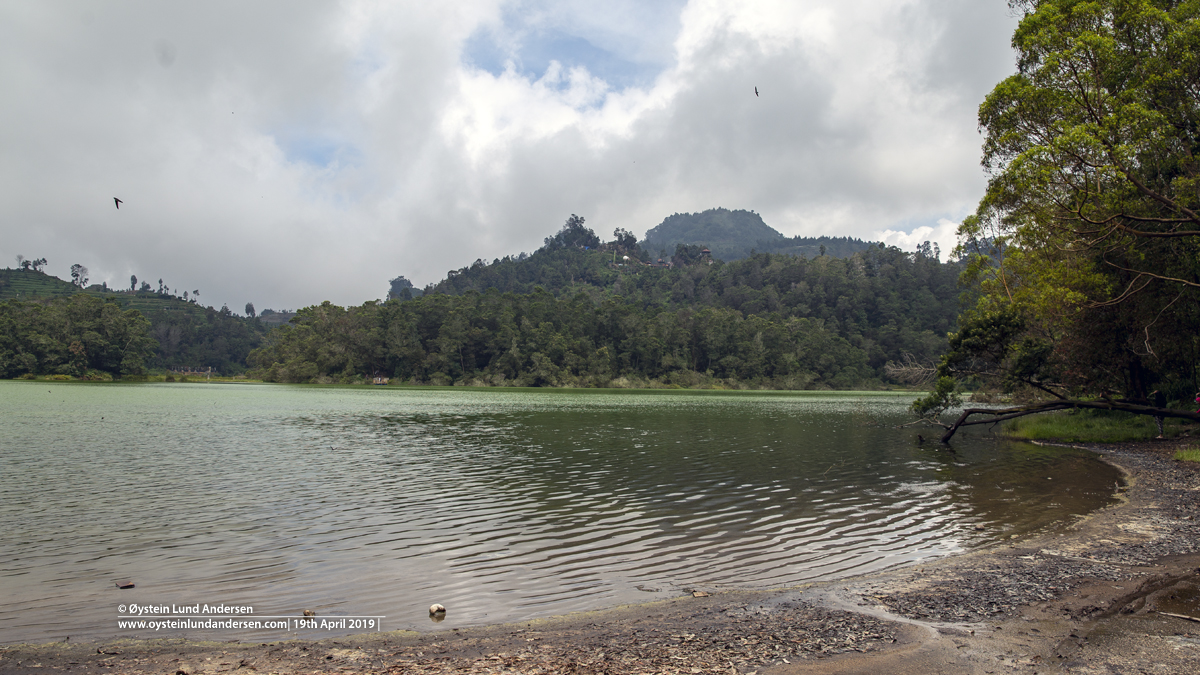The Dieng Plateau, or the The Dieng Volcanic complex, consists of two or more stratovolcanoes and more than 20 small craters and cones of Pleistocene-to-Holocene age over a 6 x 14 km area. There are
numerous surface manifestations of hydrothermal activity, including lakes, fumaroles/solfatara and hotsprings. The last magmatic (as of 2019) eruption, thought to have occurred in the Dieng Volcanic Complex was at the Pakuwaja cone, during a eruption in 18th Century.The area is also known for the development of geothermal resources and lethal outbursts of gas. Scattered temples are the witnesses of the ancient Hindu culture that once reigned.
References/source used in this article:
-Crater lakes of Java: Dieng, Kelud and Ijen, Excursion Guidebook IAVCEI General Assembly, Bali 2000
-Eruptive History of the Dieng Mountains Region, Central Java, and Potentian Hazards from future Eruption. Open-File report 1983. USGS/PVMBG.
Igir Binem
From what I have managed to find regarding the background of these 2 lakes, they are formed within the crater of a volcanic cone named Igir Binem. The middle section that divides the two lakes, may be the remnant of a old lava flow. Along the shore of Telaga Warna are some areas on the lake where gas-bubbles are rising up from the lake floor. Strong emissions of CO2-rich gas on-shore have occasionally killed animals. Solfataras are present in this area.
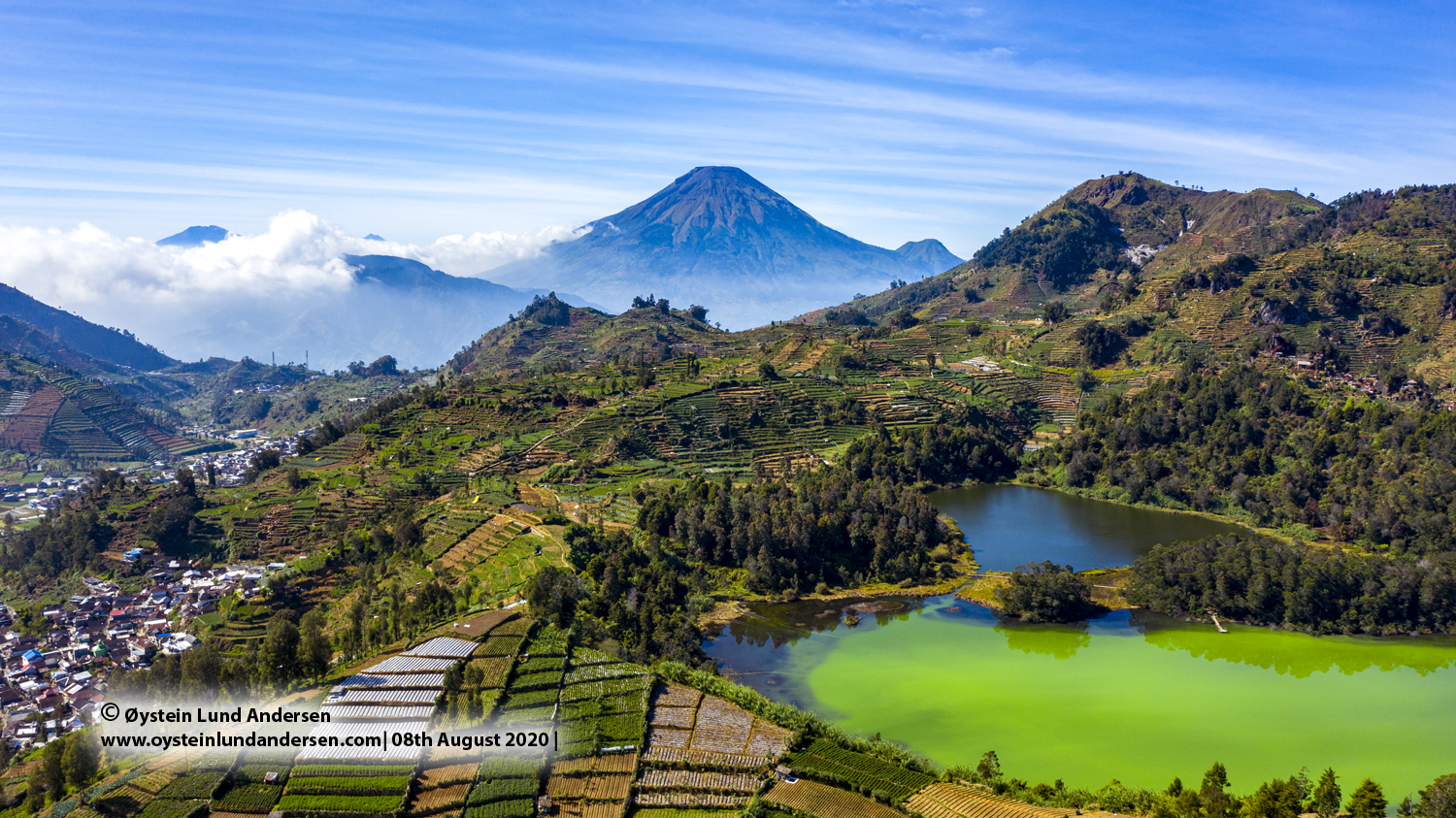
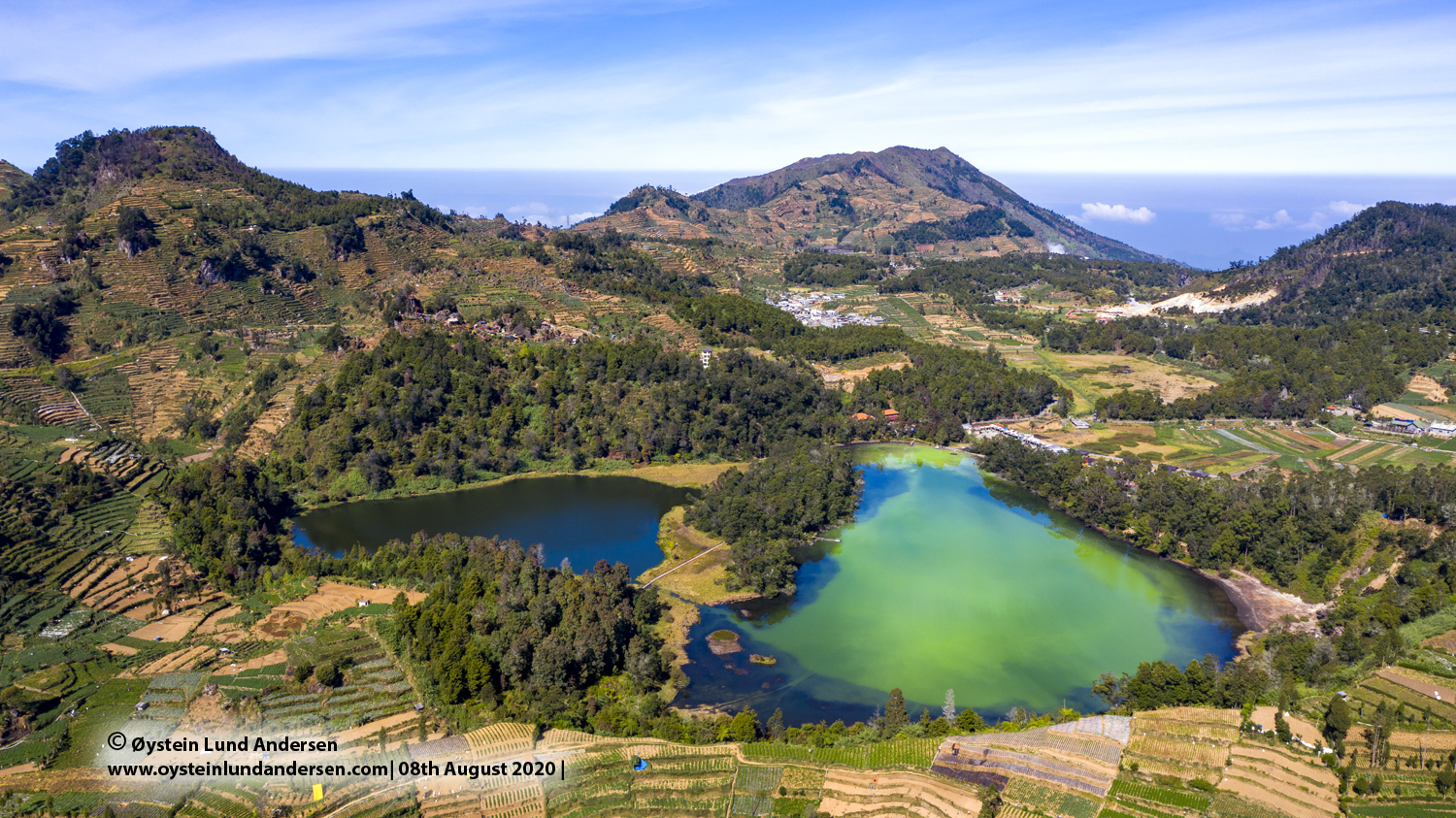

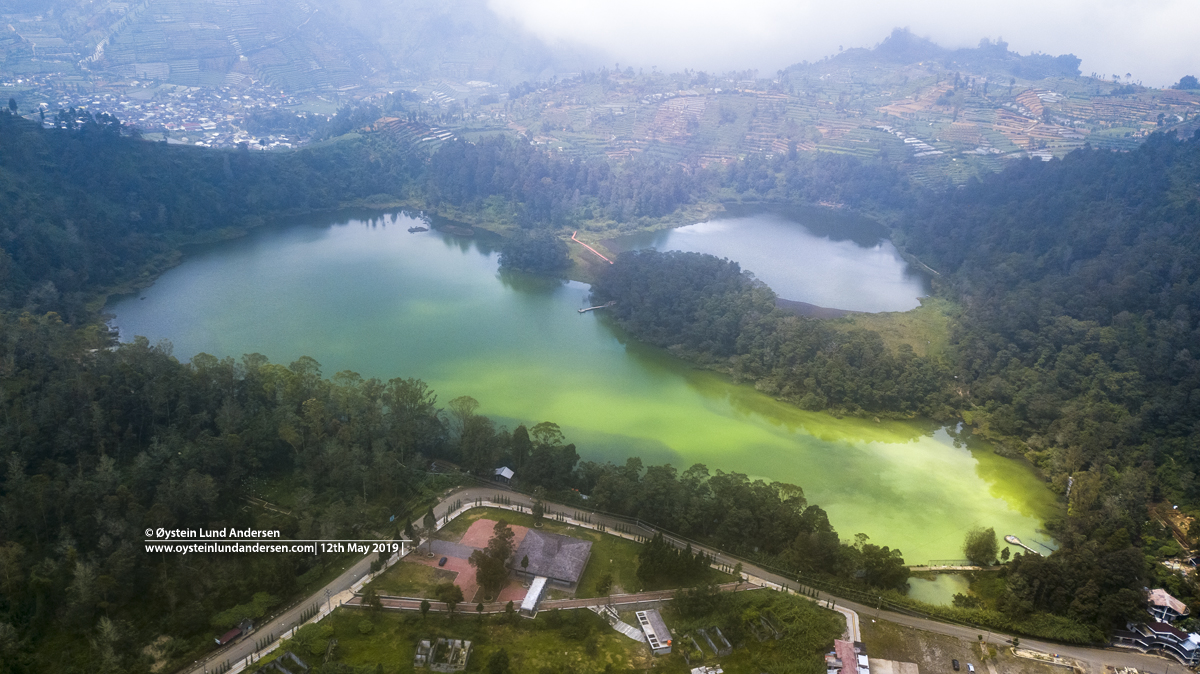
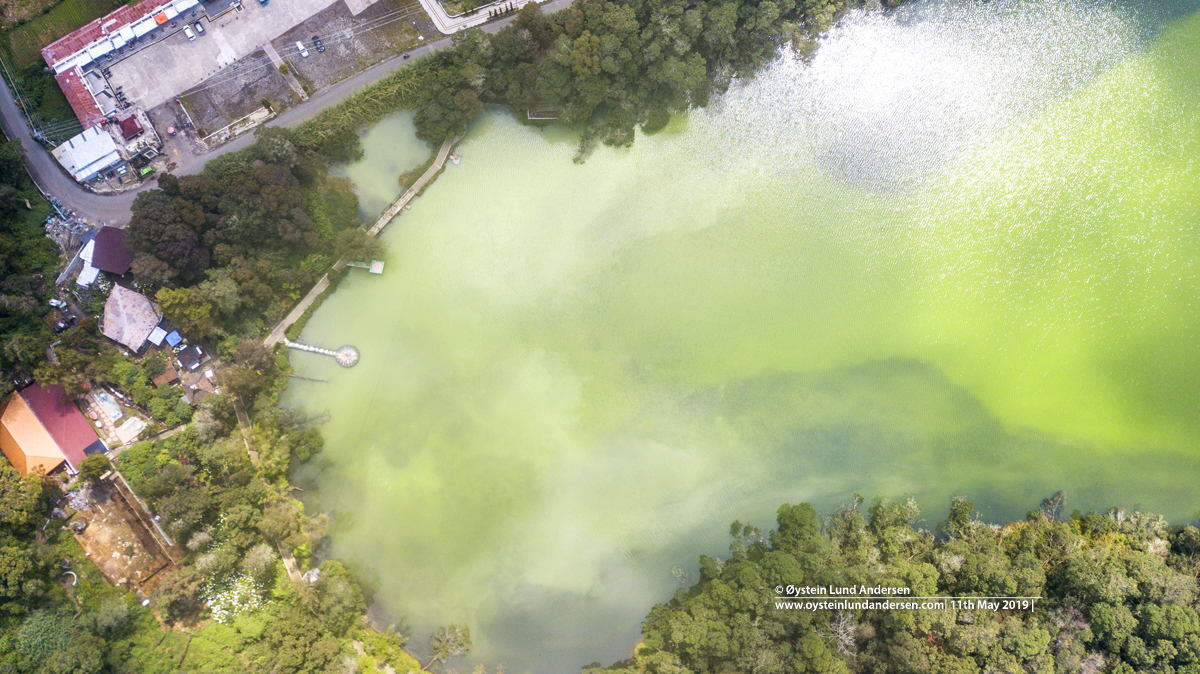
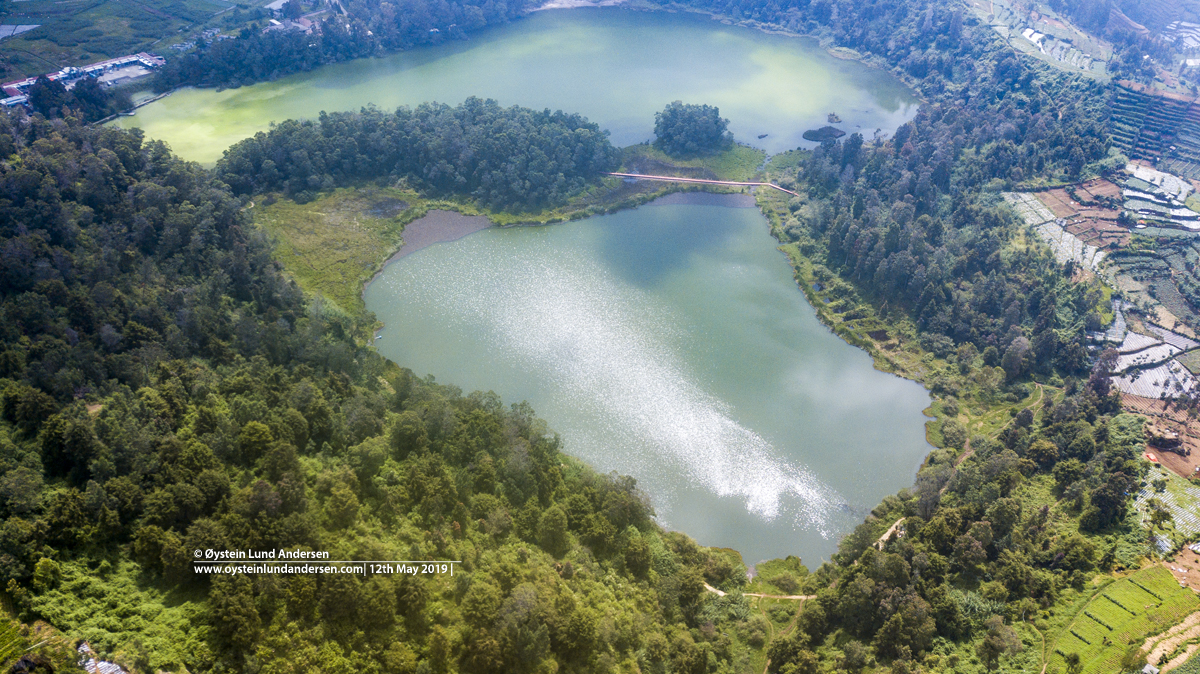


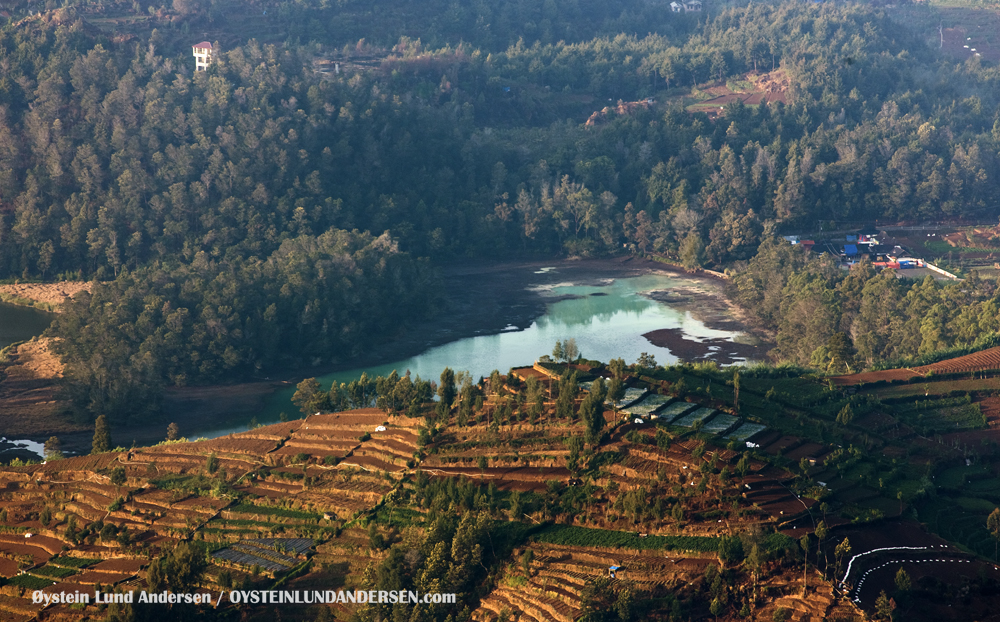
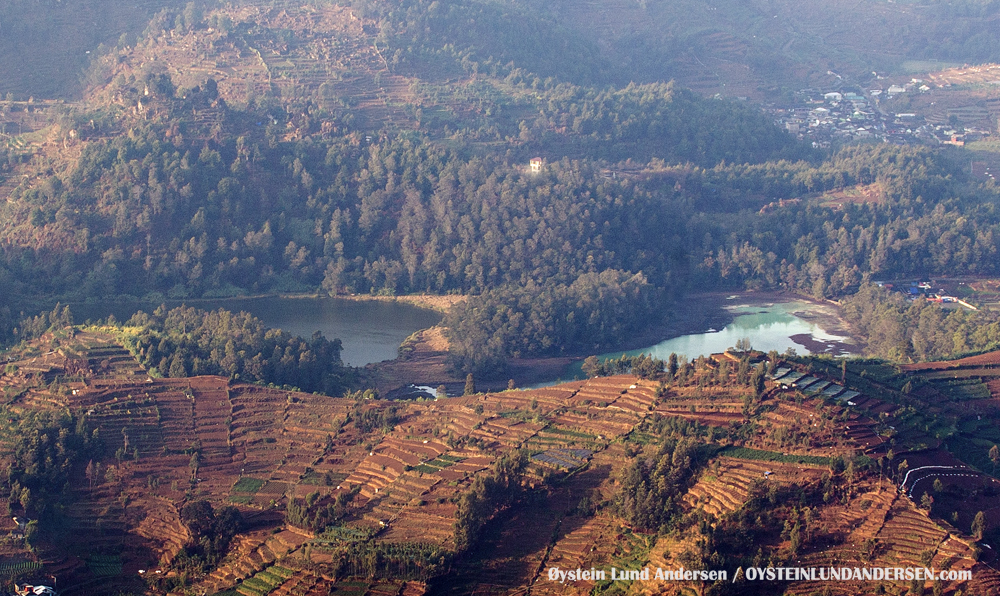
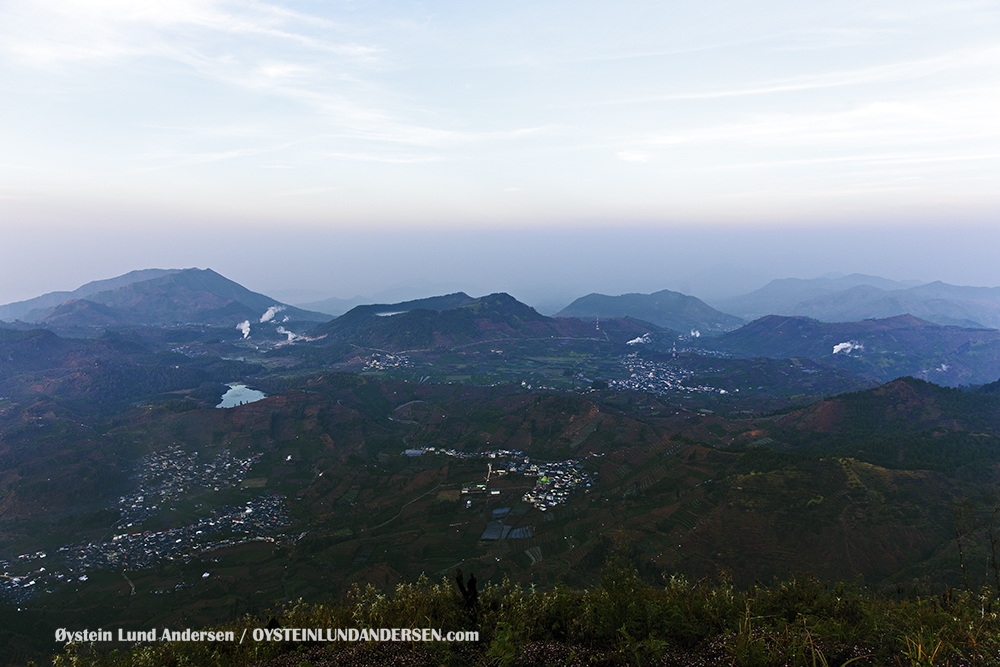
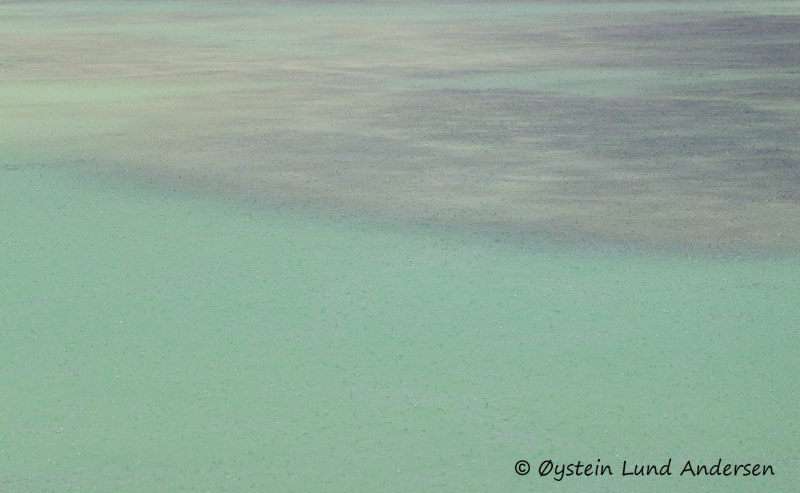
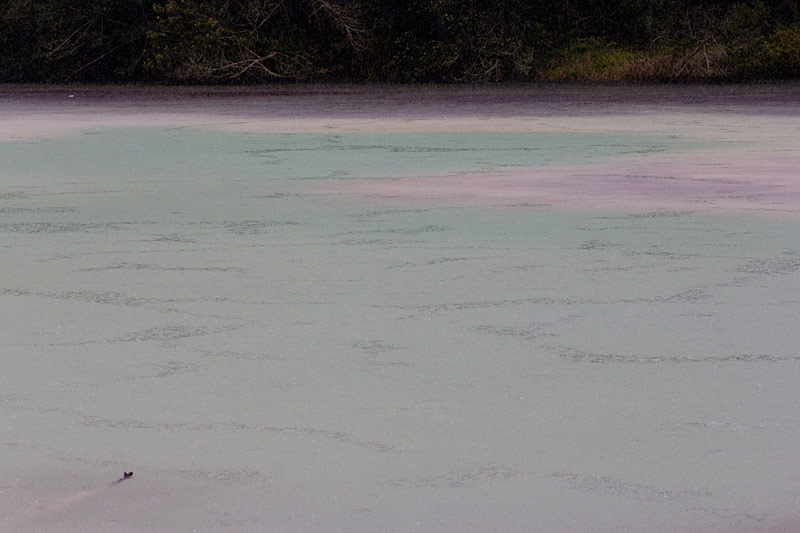
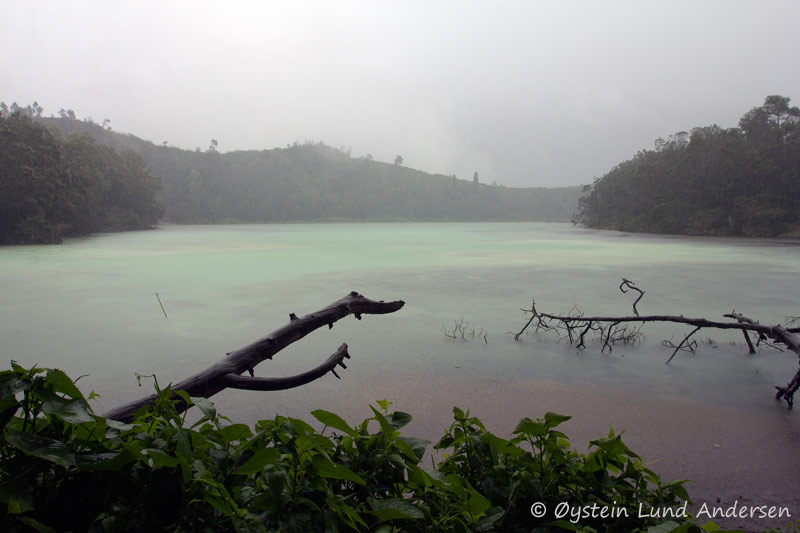

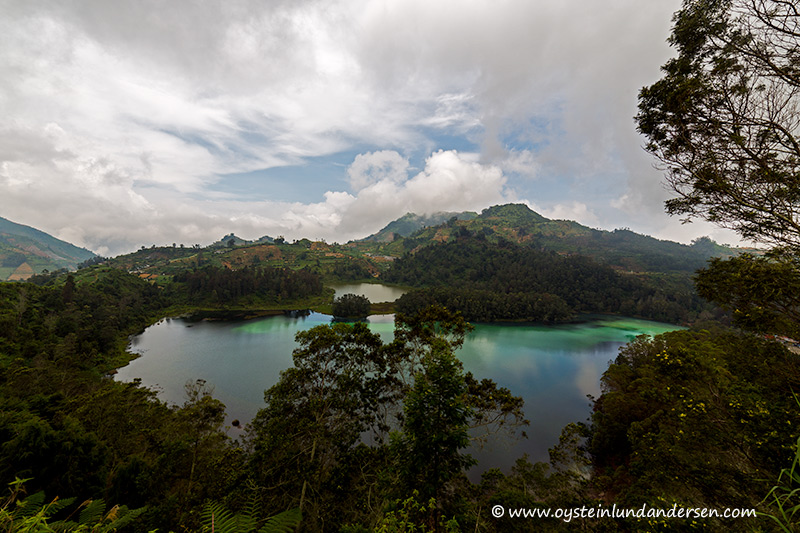
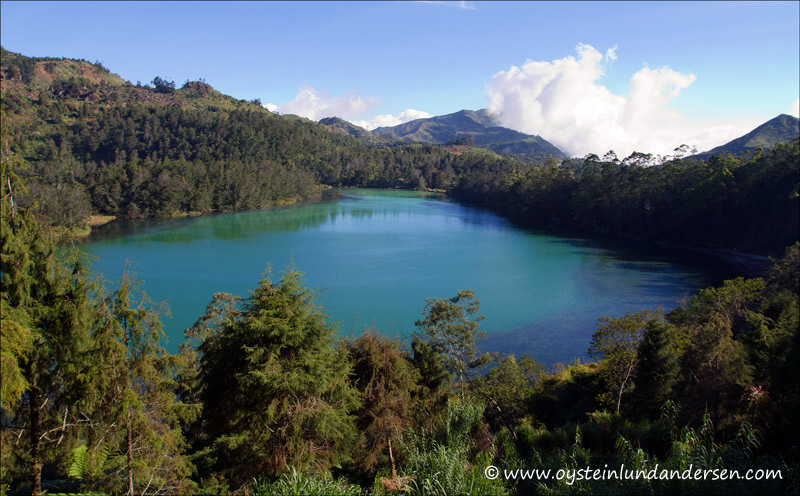
Telaga Panglion
